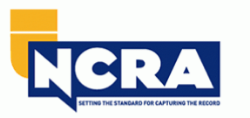Astound the Court: Important Elements of a Powerful Test Discussion
Crucial aspects such as understanding the audience, crafting a compelling story, and mastering verbal and non-verbal communication are important elements of a reliable presentation. As these aspects link, they form a cohesive approach that not only educates but likewise involves jurors on numerous levels.

Comprehending Your Audience
Recognizing your audience is a pivotal element of reliable trial presentation. A successful discussion rests on the capacity to realize the demographics, worths, and predispositions of jurors. This comprehension informs how arguments are mounted, proof is offered, and psychological charms are crafted, making sure that the message resonates with the jurors on an individual degree.
Research study shows that jurors come from varied backgrounds and may have varying degrees of understanding regarding lawful process. In addition, comprehending the jurors' prospective biases and life experiences permits the test speaker to anticipate objections and address issues proactively.
Reliable trial presentation likewise entails observing jurors' responses during the process. Being attuned to non-verbal cues can give insight right into their involvement and understanding, enabling for real-time adjustments in approach. Ultimately, a profound understanding of the audience not only improves communication yet likewise constructs connection, raising the possibility of a desirable outcome. Involving with jurors as individuals instead of a collective device is important in fostering a solid connection in the court.

Crafting an Engaging Story
Crafting a compelling story is vital in guiding jurors through the intricacies of a situation. A well-structured story not only streamlines intricate legal concepts however also involves jurors on a psychological degree, making the info more relatable and remarkable.
This message should resonate with the jurors' worths and experiences, fostering a connection that transcends plain facts. This chronological technique can aid jurors follow the development of occasions, emphasizing cause and impact.
Integrating human components-- such as personal stories or narratives-- can better enhance the narrative's impact. These components evoke empathy, allowing jurors to picture the effects of the instance on genuine lives. In addition, using a consistent theme throughout the presentation strengthens the major debate, making it easier for jurors to preserve crucial points.
Eventually, an engaging story changes a test discussion from a plain recitation of facts into a persuasive story that astounds the court, urging them to mull over with both reason and feeling.
Making Use Of Aesthetic Help
Integrating aesthetic aids right into a test discussion can substantially improve jurors' comprehension and retention of information. Aesthetic materials such as charts, layouts, photos, and video clips can change complicated legal concepts and evidence into conveniently absorbable formats. By involving multiple detects, these help permit jurors to visualize the instance's crucial elements, making it easier for them to follow along and grasp detailed details.
Moreover, properly designed visual help can stress crucial points and highlight partnerships in between various items of evidence. For circumstances, timelines can successfully show the sequence of events, while annotated photos can make clear particular information relevant to the instance. This not just help in understanding but additionally reinforces the story presented by the attorney.
Excessively complicated or chaotic visuals may bewilder jurors and take away from the message. Ultimately, efficient aesthetic interaction can be an effective device in persuading jurors and helping them reach educated verdicts.
Mastering Verbal Communication
Effective spoken communication is important in a trial discussion, as it offers as the key methods via which attorneys convey their debates and attach with jurors. Simplicity in language fosters understanding and aids jurors realize complex issues presented during the test.
Moreover, tone and pacing dramatically influence exactly how messages are received. A certain tone communicates authority, while suitable pacing allows jurors to soak up details without feeling bewildered. Lawyers ought to additionally vary their vocal inflections to stress bottom lines and maintain jurors' passion throughout the discussion.
Additionally, the company of verbal arguments is crucial. Structuring the narrative practically and coherently assists jurors follow the lawyer's logic, you could look here making it easier for them to maintain vital information. Utilizing persuasive strategies, such as storytelling, can additionally enhance the psychological resonance of the debates provided, therefore producing an extra profound link with jurors.
Eventually, understanding verbal interaction not only reinforces an attorney's situation yet likewise cultivates count on and relationship with the jury, dramatically enhancing the chances of a positive verdict.

Involving With Body Language
Nonverbal interaction plays an important role in test presentations, usually communicating messages that words alone can not express. Body movement, including motions, pose, faces, and link eye call, considerably affects exactly how jurors perceive the reputation and sincerity of the speaker. A confident position, with shoulders back and an open position, can infuse count on, while closed-off body movement may recommend defensiveness or unpredictability.

Faces should mirror the emotions related to the situation, enhancing the narrative being offered. For example, a sincere expression during an emotional moment can evoke empathy and enhance the psychological appeal. Ultimately, understanding body language is important for efficient test presentations, as it improves verbal interaction and click for info establishes an engaging presence that reverberates with the jury.
Conclusion
In verdict, captivating the jury demands a tactical technique that encompasses recognizing the audience, crafting a compelling story, making use of visual help, understanding verbal communication, and engaging through body language. Each component plays an important duty in producing an effective test discussion that reverberates with jurors on both psychological and intellectual levels (trial presentation). By integrating these elements properly, attorneys can dramatically boost their capability to convince and influence jury decision-making